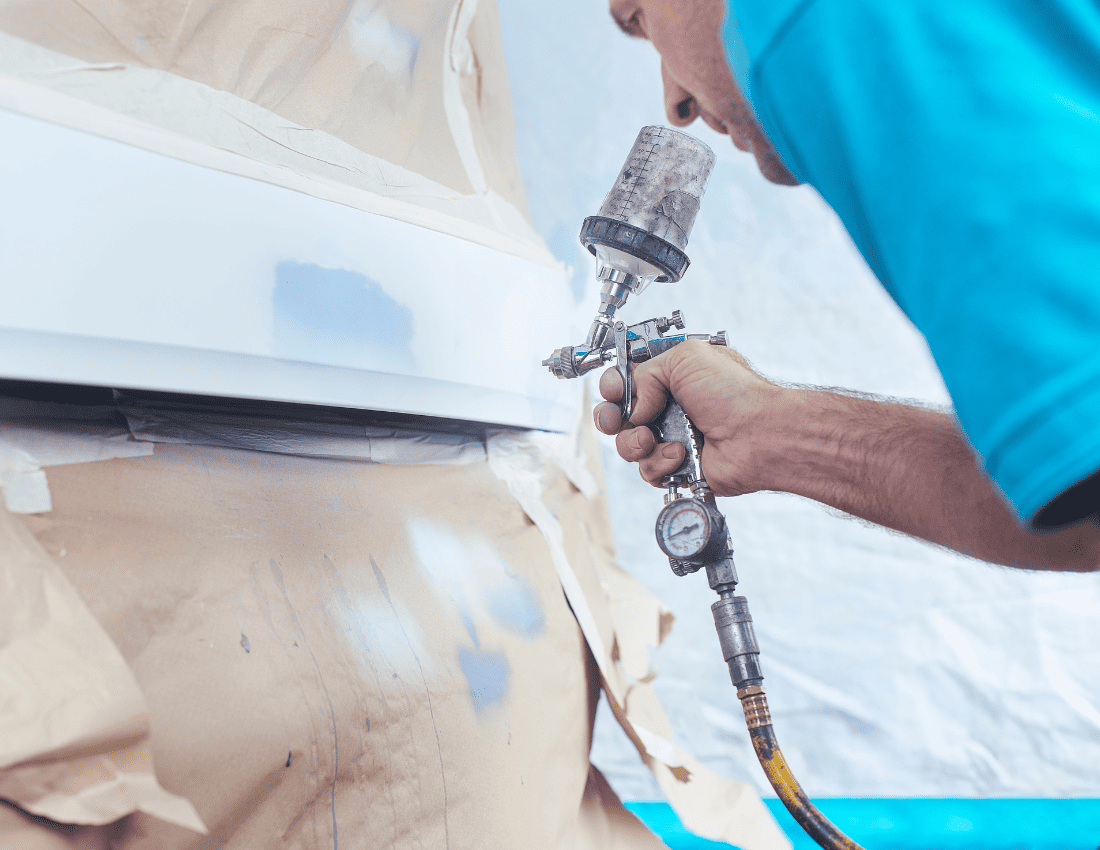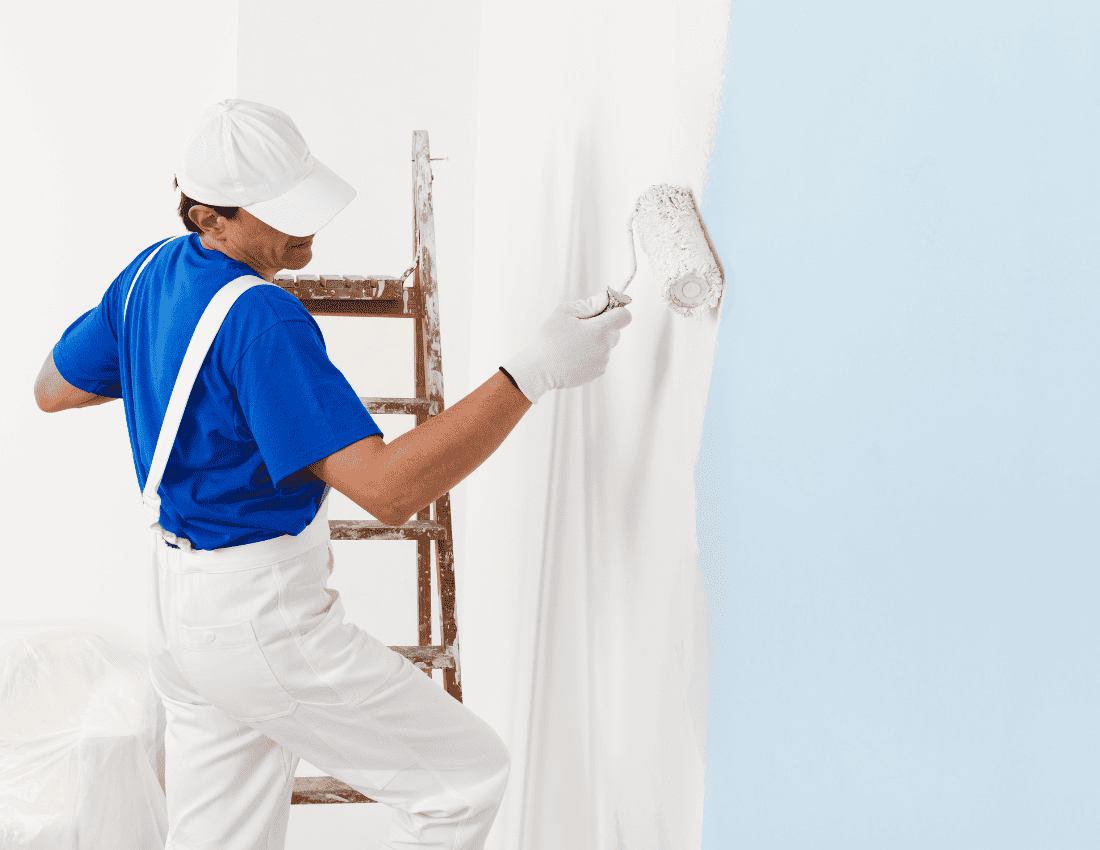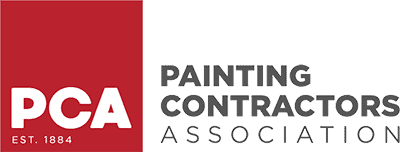A fresh coat of paint can completely change the look and feel of a home, but the method you choose makes all the difference. Roller painting vs spray painting is a common decision for homeowners tackling house painting projects. Some prefer the control and precision of a roller, while others appreciate the speed and even coverage of a sprayer.
So, which method is better?
The answer depends on what you are painting, how much prep work you are willing to do, and whether you value efficiency or precision. Whether you are painting a kitchen, ceiling, brick exterior, or drywall, knowing the advantages and limitations of each method will help you achieve the best results.
If you are looking for professional results and expert advice, house painters in Summerfield FL can help you decide which option works best for your home.
Key Takeaways:
- Roller painting vs spray painting depends on surface type, project size, and skill level. Rollers offer precision and control, while sprayers provide speed and even coverage.
- Spray painting is best for large, textured, or detailed surfaces like brick, stucco, popcorn ceilings, cabinetry, and exterior siding. It delivers a smooth, professional finish but requires more prep work and ventilation.
- Roller painting works well for interior walls, ceilings, and baseboards, providing better adhesion, less mess, and easier application for most indoor projects. It is also more budget-friendly since it uses less paint.
- Sprayers require masking and additional cleanup to prevent overspray on unwanted areas, while rollers allow for targeted application with minimal preparation.
Why Use a Paint Sprayer? Best for Large and Textured Surfaces
A paint sprayer is a high-speed tool that sprays a fine mist of paint, making it ideal for covering large, detailed, or textured surfaces quickly. Professional house painters in Summerfield, FL often use sprayers for exterior painting, brick, stucco, and intricate details like cabinetry and molding.
When a Paint Sprayer Works Best
A paint sprayer is an excellent tool for certain types of surfaces and projects where speed, even coverage, and the ability to reach into grooves and textures are key. While it requires more prep work than rolling, it provides a smooth, professional finish that can be difficult to achieve with other methods. Here’s when a paint sprayer is the best choice.
Popcorn Ceilings and Textured Drywall
Painting popcorn ceilings or textured drywall with a roller can be challenging. The thick, uneven texture makes it difficult to spread paint evenly, often resulting in uneven application and buildup in some areas while missing others. A sprayer eliminates these issues by distributing paint in a fine mist that coats the entire surface evenly and effortlessly.
Another issue with rolling textured surfaces is that too much pressure can flatten or damage the texture. A sprayer applies paint without physically touching the surface, preserving the original look while ensuring a consistent coat from edge to edge. This is especially important if you’re working with older popcorn ceilings, where excessive pressure can cause the material to start crumbling.
Brick, Stucco, and Masonry
Painting brick, stucco, or masonry with a roller can feel like an endless task. These surfaces are naturally porous, absorbing paint quickly and making it difficult to achieve solid coverage without applying multiple coats. A paint sprayer allows the paint to penetrate the surface evenly, ensuring full coverage in fewer applications.
Additionally, brick and stucco tend to have deep grooves and an uneven surface, which means a paint roller may struggle to reach into the recesses. With a sprayer, the paint mist naturally settles into every crevice, providing better adhesion and a more even finish. If you are tackling an exterior brick home, stucco siding, or a masonry fireplace, a sprayer will save you both time and effort while delivering a professional-grade finish.
Crown Molding, Wainscoting, and Trim
Painting intricate details like crown molding, wainscoting, and trim can be tricky. A roller or brush often leaves visible streaks, drips, or an uneven coat, making the final result look less polished. A sprayer eliminates these issues by applying a thin, uniform layer that gets into every groove and decorative edge without excess buildup.
This is particularly beneficial for homes with highly detailed trim work, such as raised paneling, decorative molding, or beadboard walls. With a sprayer, you can cover these surfaces in less time while ensuring a perfectly smooth finish with no visible brush strokes or roller marks.
Exterior Siding, Garage Doors, and Fences
When painting large outdoor surfaces, time and efficiency matter. Using a roller on exterior siding, garage doors, or fences can be tedious and time-consuming, requiring multiple passes to get even coverage. A sprayer, on the other hand, covers these areas in a fraction of the time, applying paint quickly and smoothly across large surfaces.
Fences and exterior siding often have overlapping panels, deep grooves, or textured finishes, which can make roller application difficult. A sprayer ensures even coverage in hard-to-reach areas, eliminating the need to go back and touch up missed spots. If you’re repainting a wood fence, metal garage door, or vinyl siding, a sprayer will speed up the process and provide a seamless finish.
Cabinetry and Furniture
If you want a polished, factory-quality finish on your kitchen cabinets, bathroom vanities, or furniture pieces, a paint sprayer is the best choice. Rollers and brushes can leave visible streaks, brush marks, or an uneven texture, which takes away from the sleek, modern look that most homeowners want for cabinets and furniture.
A sprayer applies a thin, even coat, making it ideal for glossy, satin, or semi-gloss finishes that highlight details and reflect light. Whether you’re refinishing furniture, repainting built-in bookshelves, or updating kitchen cabinets, using a sprayer ensures a professional-looking result with minimal effort.
Advantages of Spray Painting
A paint sprayer offers many benefits, especially for large-scale and detailed projects. Here’s why professional painters and DIYers alike prefer this method.
- Covers large areas quickly. Unlike a roller, which requires multiple passes, a sprayer continuously applies paint in a fine mist, cutting down painting time significantly. This is especially useful for big projects like exterior walls, ceilings, and fences.
- Provides an even, streak-free finish. Since sprayers distribute paint in a smooth, even mist, they eliminate roller marks, brush strokes, and inconsistent texture. This is ideal for high-gloss or satin finishes, where imperfections stand out.
- Reaches grooves and crevices easily. Whether you’re painting crown molding, cabinetry, or textured surfaces, a sprayer ensures even coverage without excessive buildup in recessed areas.
- Works well for furniture, trim, and detailed surfaces. If you want a high-end, professional finish, a sprayer is the best tool for the job.
Challenges of Spray Painting
While spray painting has its benefits, it also comes with some drawbacks that should be considered before choosing this method.
- Requires extensive masking and preparation. Since sprayers produce a fine mist, anything not being painted must be carefully covered. Floors, windows, furniture, and trim all need to be masked off to prevent accidental overspray.
- Uses more paint than a roller. Because some of the paint is lost in the air as mist, sprayers tend to use more paint, which can increase material costs—especially for large projects.
- Needs proper ventilation, especially with oil-based paints. If you’re using oil paint, primer, or waterproofing treatments, proper airflow is essential to prevent fume buildup. This means working outdoors or in well-ventilated areas.
- Can create overspray, requiring extra cleanup. Even with careful masking, tiny paint particles can settle on nearby surfaces, leading to extra cleanup after painting. This makes sprayers less practical for small indoor projects.
Preparation Tips for Spray Painting
Using a paint sprayer requires more setup than traditional roller painting, but proper preparation will help you avoid mistakes and get the best results.
- Mask off surfaces, windows, and floors with plastic sheeting and tape. Anything you don’t want painted must be completely covered. Trim, baseboards, and nearby furniture should be carefully taped and protected.
- Use personal protective equipment (PPE). Paint sprayers create fine airborne particles, so wearing a mask, safety goggles, and gloves will protect you from inhaling paint fumes or getting mist in your eyes.
- Ensure proper ventilation if painting indoors. Open windows and doors, or use a fan to circulate fresh air and prevent paint fumes from accumulating.
- Practice on a scrap surface before starting. Spray painting requires a steady hand and consistent motion. Practicing on a piece of cardboard or scrap wood helps you adjust the pressure and technique before applying paint to your project.
If you are painting a kitchen, bathroom, or furniture piece, using a paint sprayer is the best way to achieve a smooth, professional finish. However, proper preparation and careful technique are essential for avoiding common mistakes and getting long-lasting results.
Why Use a Paint Roller? The Go-To for Interior Walls and Ceilings
For most indoor walls and ceilings, a paint roller is the best option. Rollers provide better control, minimal mess, and strong adhesion for primer and multiple coats. Unlike sprayers, rollers do not create mist or require extensive masking, making them ideal for residential painting projects.
When a Paint Roller Works Best
A paint roller is one of the most common tools used for interior painting because of its control, ease of use, and clean application. While it may not be as fast as a sprayer, it offers precise coverage and minimizes overspray and mess, making it the preferred choice for most indoor projects. Here’s when a paint roller is the best option.
Interior Walls in Bedrooms, Living Rooms, and Kitchens
Painting interior walls requires even coverage and control, which is where a roller excels. Unlike sprayers, which require masking off entire rooms to prevent paint mist from settling on unwanted surfaces, rollers allow for targeted application with minimal preparation. This makes them perfect for occupied spaces, where protecting furniture and flooring is a concern.
In living rooms and bedrooms, where smooth and consistent coverage is important, a roller helps distribute paint evenly without thin spots, drips, or excess buildup. In kitchens, where walls may have stains or grease buildup, rollers work well with oil-based or latex paints to provide a durable, scrubbable finish that holds up over time.
Ceilings
Painting ceilings can be tricky, but rollers make the process easier and cleaner. Unlike sprayers, which release a fine mist that can drift down onto floors, furniture, and countertops, rollers keep the paint contained, reducing the risk of mess.
Another advantage of using a roller on ceilings is that it prevents drips and uneven coverage. Sprayers can sometimes apply too much paint in one area, leading to runs or streaks. A roller, when used correctly, provides a smooth, consistent coat that hides imperfections and gives the ceiling a fresh, uniform appearance.
Drywall and Plaster Walls
Drywall and plaster walls can sometimes have small dents, cracks, or surface imperfections that are difficult to hide with a sprayer. A roller applies a thicker coat, which helps to smooth out these minor flaws, resulting in a more polished finish.
When painting new drywall, a roller is especially beneficial because it allows better adhesion for primer and topcoats, ensuring the paint bonds well and provides long-lasting durability. If you are working with older plaster walls, a roller helps apply paint evenly over repaired areas, creating a seamless appearance.
Baseboards and Molding
Painting baseboards, molding, and trim requires precision, and while some might think a sprayer is a good choice, rollers offer better control. A small roller, typically between 2 to 4 inches wide, allows you to apply paint smoothly without excess buildup.
When using a paint sprayer on trim, there is always the risk of overspray on walls and floors, requiring extensive masking and cleanup. A roller, on the other hand, lets you work carefully and avoid unnecessary mess. Whether painting crown molding, baseboards, or window casings, a roller provides a more controlled application with fewer touch-ups needed.
Advantages of Roller Painting
A paint roller is often the preferred tool for indoor painting because it provides clean, consistent results with minimal hassle. Here’s why rollers are a popular choice for both DIY painters and professionals.
- Easier for beginners with no special technique required. Unlike sprayers, which require steady hand movements, pressure adjustments, and nozzle selection, rolling is simple and straightforward. If you are painting for the first time, a roller is the most user-friendly option.
- Requires minimal prep work compared to a sprayer. Because rollers do not create paint mist, you don’t have to mask off entire rooms or worry about extensive ventilation. This makes rollers ideal for occupied homes where moving furniture or covering everything is impractical.
- Uses less paint, making it more cost-effective. Sprayers tend to waste paint through overspray, while rollers directly apply paint to the surface, making them the more budget-friendly choice for most projects.
- Provides strong adhesion for primer and multiple coats. Rollers press paint into the surface, helping it bond more effectively, which results in better durability and long-lasting results.
Challenges of Roller Painting
While rollers are a great choice for many projects, they do come with some limitations that should be considered before starting.
- Slower than spray painting for large surfaces. If you are painting a large open space or the exterior of a home, rolling can take significantly longer than using a sprayer. Sprayers cover more area in less time, making them the faster option for big jobs.
- Harder to cover textured or grooved surfaces evenly. If you are painting brick, stucco, or deep grooves in molding, a roller may struggle to reach recessed areas, leading to uneven coverage. A sprayer is a better choice for highly textured surfaces.
- May leave subtle roller texture if not applied carefully. If too much pressure is applied, or if the roller is overloaded with paint, it can create visible streaks or uneven patches. Proper technique and the right roller nap are important to achieving a smooth finish.
Best Practices for Roller Painting
Using a roller correctly will help you achieve professional-looking results with minimal effort. Follow these tips for the best outcome.
- Choose the right roller nap. Not all rollers are the same. For smooth walls and ceilings, use a short nap roller (¼ to ⅜ inch). For textured surfaces like stucco or rough drywall, opt for a thicker nap (½ inch or more) to ensure better coverage.
- Apply even pressure. Pressing too hard can cause streaks, ridges, or roller marks. Instead, use a steady, controlled motion, allowing the roller to glide over the surface without pushing too much paint into one area.
- Work in sections. Breaking the project into smaller sections helps ensure even coverage and prevents visible lap marks. Always work from top to bottom, overlapping each pass slightly to blend the paint seamlessly.
- Use a high-quality primer. Applying primer before painting improves adhesion, especially on new drywall, repaired areas, or stained surfaces. This step helps the topcoat go on smoothly and last longer.
If you are painting a room, ceiling, or smooth drywall, a roller is the best choice for its ease of use, affordability, and clean application. It is the go-to method for most indoor projects, offering better control and precision than a sprayer.
We also discussed previously how choosing the right interior paint types will impact durability, maintenance, and overall appearance. Understanding these differences will help you not only select the best application method but also achieve long-lasting results that complement your home’s design.
Comparison of Roller Painting vs Spray Painting
The choice between roller painting vs spray painting depends on your project type, skill level, and how much prep work you are willing to do.
| Best For | Spray Painting | Roller Painting |
|---|---|---|
| Large areas | Faster coverage | Takes longer |
| Textured surfaces | Provides smooth, even application | Harder to cover evenly |
| Furniture and cabinets | Factory-like finish | May leave roller texture |
| Interior walls and ceilings | Risk of overspray, requires masking | Provides clean, even coverage |
| Budget-conscious projects | Uses more paint | More cost-effective |
Premium Painting’s Painting Process and How We Can Help
Our house painters in Summerfield FL offer professional interior and exterior painting services in Crystal River, Citrus Springs, Lecanto, FL, and the surrounding areas. Whether you choose roller painting or spray painting, we deliver high-quality results with attention to detail.
- Surface Preparation. Cleaning, drywall repairs, and priming for strong adhesion.
- Masking and Protection. Covering floors, windows, and furniture to prevent overspray or drips.
- Expert Application. Using high-quality rollers, sprayers, and brushes for the best results.
- Final Touch-Ups and Cleanup. Ensuring a smooth, clean finish with no mess left behind.
Call Premium Painting at 352-660-7820 for your FREE estimate!




